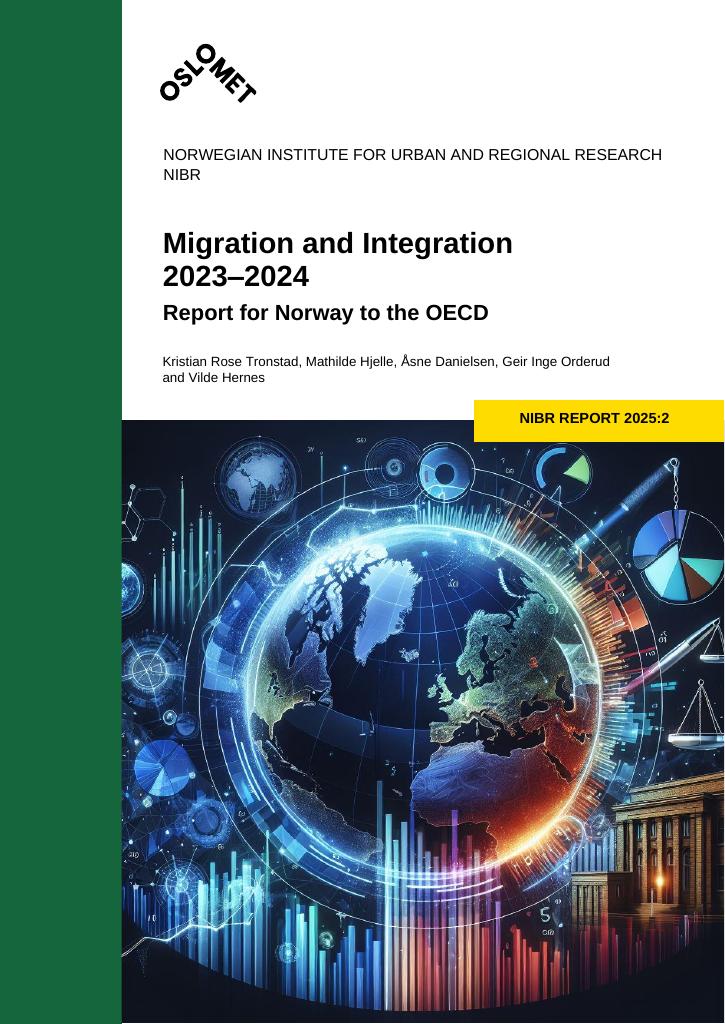Kartlegging
Migration and Integration 2023–2024 - Report for Norway to the OECD
This report has been commissioned by the Norwegian Directorate of Integration and Diversity (IMDi) as Norway’s official contribution to the OECD’s SOPEMI network, which monitors international migration trends and policies. The report provides a comprehensive overview of Norway’s migration and integration efforts, addressing key developments, policy changes and statistical analyses of migration. Summary: In 2023, Norway experienced a near-record increase in net migration, adding approximately one per cent to its population. This rise was primarily driven by displaced Ukrainians fleeing the war, facilitated by Norway’s collective protection scheme. While Ukrainian migration surged, other forms of migration, such as labour and family-related migration, remained relatively stable. This marked one of the highest annual migration increases since 2011. To manage the influx of Ukrainian refugees, Norway introduced stricter regulations, including restrictions on travel back to Ukraine and exclusions for dual citizens and individuals from deemed safe areas. Additionally, the government implemented tuition fees for non-EU/EFTA students, breaking with Norway’s tradition of free higher education. Critics warned this could reduce international student numbers and impact academic collaboration, though scholarships were introduced for students from developing countries. The government also strengthened return policies, emphasizing voluntary return programs and streamlining forced returns for rejected asylum seekers.
Publisert
Eier
Integrerings- og mangfoldsdirektoratet
Utfører
OsloMet - storbyuniversitetet
